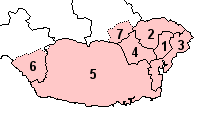The boundary commissions in the United Kingdom are non-departmental public bodies responsible for determining the boundaries of constituencies for elections to the House of Commons. There are four boundary commissions:

Cardiff South and Penarth is a constituency created in 1983 represented in the House of Commons of the UK Parliament since 2012 by Stephen Doughty, a Labour and Co-operative MP. It is the largest such entity in Wales, with an electorate of 75,175 and one of the most ethnically diverse.

As a result of the Fifth Periodical Review of the Boundary Commission for Scotland, Scotland is covered by 59 constituencies of the House of Commons of the United Kingdom Parliament - 19 Burgh constituencies and 40 County constituencies. Constituencies marked * appear on the Central Area Enlargement.
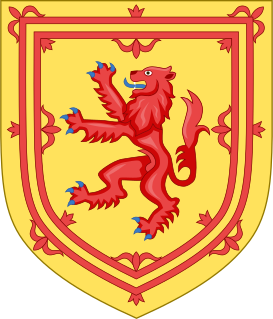
Scottish Westminster constituencies were Scottish constituencies of the House of Commons of the Parliament of Great Britain, normally at the Palace of Westminster, from 1708 to 1801, and have been constituencies of the House of Commons of the Parliament of the United Kingdom, also at Westminster, since 1801. Constituency boundaries have changed on various occasions, and are now subject to both periodical and ad hoc reviews of the Boundary Commission for Scotland.
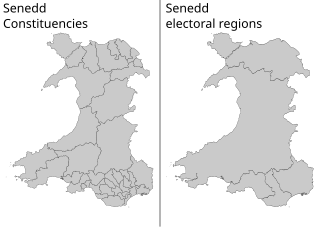
The Senedd constituencies and electoral regions are the electoral districts used to elect Members of the Senedd to the Senedd, and have been used in some form since the first election of the then National Assembly for Wales in 1999. New boundaries were introduced for the 2007 elections and currently consist of forty constituencies and five regions. The five electoral regions are: Mid and West Wales, North Wales, South Wales Central, South Wales East, and South Wales West, with the forty constituencies listed below. Voting last took place in all districts in the 2021 Senedd election, and are not used for local government.
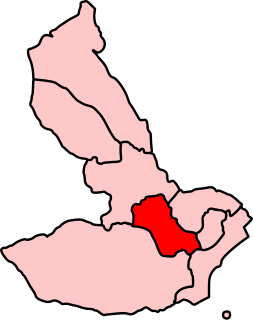
Cardiff West is a constituency of the Senedd. It elects one Member of the Senedd by the first past the post method of election. Also, however, it is one of eight constituencies in the South Wales Central electoral region, which elects four additional members, in addition to eight constituency members, to produce a degree of proportional representation for the region as a whole. The constituency has twice provided the First Minister of Wales, Rhodri Morgan from 2000-2009 and Mark Drakeford from 2018–Present.
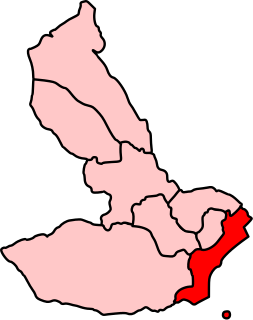
Cardiff South and Penarth is a constituency of the Senedd. It elects one Member of the Senedd by the first past the post electoral system. It is typically a safe Labour seat.

Cardiff North is a constituency of the Senedd. It elects one Member of the Senedd by the first past the post method of election. Also, however, it is one of eight constituencies in the South Wales Central electoral region, which elects four additional members, in addition to eight constituency members, to produce a degree of proportional representation for the region as a whole.

The Parliamentary Voting System and Constituencies Act 2011(c. 1) is an Act of the Parliament of the United Kingdom that made provision for the holding of a referendum on whether to introduce the Alternative Vote system in all future general elections to the UK Parliament and also made provision on the number and size of parliamentary constituencies. The Bill for the Act was introduced to the House of Commons on 22 July 2010 and passed third reading on 2 November by 321 votes to 264. The House of Lords passed the Bill, with amendments, on 14 February 2011, and after some compromises between the two Houses on amendments, it received Royal Assent on 16 February.

The Sixth Periodic Review of Westminster constituencies, also known as the 2013 Review, 2018 Review, or just boundary changes, was an ultimately unfruitful cycle of the process by which constituencies of the House of Commons of the United Kingdom are reviewed and redistributed. The four UK boundary commissions carried out their reviews between 2011 and 2018, but their recommendations were not taken up by the government and were formally laid aside in 2020.

The 2023 Periodic Review of Westminster constituencies is the current cycle of the process to redraw the constituency map for the House of Commons. The process for periodic reviews of parliamentary constituencies in the United Kingdom is governed by the Parliamentary Constituencies Act 1986, as amended by the Parliamentary Voting System and Constituencies Act 2011 and subsequently by the Parliamentary Constituencies Act 2020. This review is the successor to the Sixth Periodic Review of Westminster constituencies, which was ultimately abandoned after two successive proposals by the Commissions failed to pass into law.
